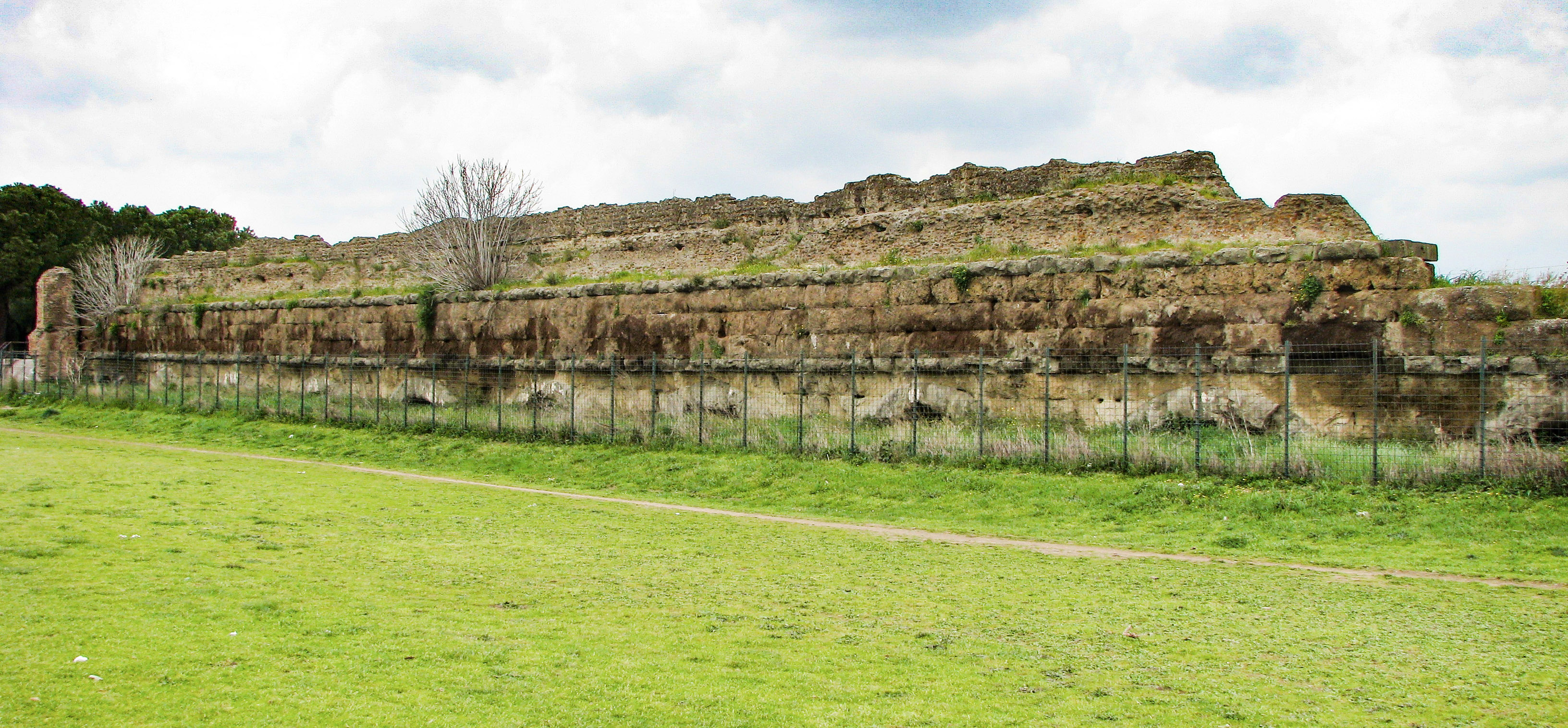Aqua Tepula on:
[Wikipedia]
[Google]
[Amazon]

 The Aqua Tepula is an ancient Roman aqueduct completed in 125 BC by censors Gnaeus Servilius Caepio and Lucius Cassius Longinus Ravilla. The water the aqueduct carried was tepid, and probably thus unpalatable. It is not known how much water the original aqueduct carried, but the amount conducted to the city was smaller than that of the Aqua Marcia. After a (major) reconstruction by Agrippa in 33 BC the aqueduct delivered to the city daily 400 quinariae -- .
The Aqua Tepula is an ancient Roman aqueduct completed in 125 BC by censors Gnaeus Servilius Caepio and Lucius Cassius Longinus Ravilla. The water the aqueduct carried was tepid, and probably thus unpalatable. It is not known how much water the original aqueduct carried, but the amount conducted to the city was smaller than that of the Aqua Marcia. After a (major) reconstruction by Agrippa in 33 BC the aqueduct delivered to the city daily 400 quinariae -- .
 Its source was at the volcanic area of the Alban hills on the estate of
Its source was at the volcanic area of the Alban hills on the estate of Frontinus, de aq. 2.68
/ref> derived from the future Anio Novus aqueduct (built around 50 AD), were added at the ''horti Epaphroditiani'' on the Esquiline hill for a final overall total, upon distribution, of 445 (190+92+163) quinariae (18,467 m3, about 200 litres per second), still a scant amount in Roman times.
''De aquaeductu''
(Latin, with English translations)
The Roman Aqueducts
{{Authority control Tepula

History
After its initial construction, the was not maintained or repaired for almost a century. The first, and extensive, repairs took place in 33 BC when the aqueduct was restored, and probably rebuilt for the most part, by Agrippa. During these restoration works an additional source was added to the aqueduct while the first few miles of the original conduit were abandoned, and water from both sources of Tepula added to those of Aqua Julia . Between 11 and 4 BC was again restored, this time byAugustus
Gaius Julius Caesar Augustus (born Gaius Octavius; 23 September 63 BC – 19 August AD 14), also known as Octavian (), was the founder of the Roman Empire, who reigned as the first Roman emperor from 27 BC until his death in A ...
, and archaeological remains of local repair works show that the aqueduct was subjected to (at least) local repairs) between 41 and 54 AD, during the reign of Claudius
Tiberius Claudius Caesar Augustus Germanicus ( ; ; 1 August 10 BC – 13 October AD 54), or Claudius, was a Roman emperor, ruling from AD 41 to 54. A member of the Julio-Claudian dynasty, Claudius was born to Nero Claudius Drusus, Drusus and Ant ...
. Though there are a few remains of later repairs, these can't be dated reliablly.
Route
 Its source was at the volcanic area of the Alban hills on the estate of
Its source was at the volcanic area of the Alban hills on the estate of Lucullus
Lucius Licinius Lucullus (; 118–57/56 BC) was a Ancient Romans, Roman List of Roman generals, general and Politician, statesman, closely connected with Lucius Cornelius Sulla. In culmination of over 20 years of almost continuous military and ...
, between today's municipalities of Grottaferrata and Marino, a mere 18 km from Rome
Rome (Italian language, Italian and , ) is the capital city and most populated (municipality) of Italy. It is also the administrative centre of the Lazio Regions of Italy, region and of the Metropolitan City of Rome. A special named with 2, ...
.
Until the Augustan era the aqueduct flowed along an underground route from source to terminus.
In 33 BC, Agrippa modified the aqueduct concurrently with the construction of the Aqua Julia and added 92 quinariae of water flow from the Julia. The conduit was made to join the newly built one for Julia until it reached the current locality of Capannelle near the Aqua Marcia where there was a ''limaria'' pool (settling basin) and by which time the water had cooled.
The water was then split again (for an unexplained reason) into two conduits for the Tepula and the Julia, the Tepula being the highest, superimposed on arches of the Marcia, for the remaining 10 km. They reached the city at ''ad spem veterem'', near Porta Maggiore.
From here on the conduit used the Aurelian Walls and crossed Via Tiburtina on an arch which became Porta Tiburtina. The route passed the Viminal gate, where Termini Station stands today, and ended near the Porta Collina, where the main distribution ''castellum
A ''castellum'' in Latin is usually:
* a small Roman fortlet or tower,C. Julius Caesar, Gallic War; 2,30 a diminutive of (' military camp'), often used as a watchtower or signal station like on Hadrian's Wall. It is distinct from a , which ...
'' was, near the current Via XX Settembre. It passed through 14 ''castella'' delivering water to four regions.
Later another 163 quinariae of water,/ref> derived from the future Anio Novus aqueduct (built around 50 AD), were added at the ''horti Epaphroditiani'' on the Esquiline hill for a final overall total, upon distribution, of 445 (190+92+163) quinariae (18,467 m3, about 200 litres per second), still a scant amount in Roman times.
See also
* Ancient Roman technology * List of aqueducts in the city of Rome * List of aqueducts in the Roman Empire * List of Roman aqueducts by date * Parco degli Acquedotti * Roman engineeringReferences
Sources *External links
* Frontinus''De aquaeductu''
(Latin, with English translations)
The Roman Aqueducts
{{Authority control Tepula